
Code: 02254816
Introduction to Parallel and Vector Solution of Linear Systems
by James M. Ortega
Although the origins of parallel computing go back to the last century, it was only in the 1970s that parallel and vector computers became available to the scientific community. The first of these machines-the 64 processor llliac ... more
- Language:
 English
English - Binding: Paperback
- Number of pages: 305
Publisher: Springer-Verlag New York Inc., 2013
- More about this

185.76 €

Low in stock at our supplier
Shipping in 13 - 16 days
Potřebujete více kusů?Máte-li zájem o více kusů, prověřte, prosím, nejprve dostupnost titulu na naši zákaznické podpoře.
Add to wishlist
You might also like
-

Furry!
23.24 € -18 % -

Saddam Hussein: A Political Biography
14.98 € -4 % -

Autism Cookbook
17.40 € -5 % -

The Devotional Bible Study Notebook
30.58 € -

Der kleine Lügendetektor / Die Körpersprache des Datings
13.07 € -10 % -

Sea Quest: Kraya the Blood Shark
6.63 € -4 % -

I Remember...
17.60 € -

Disintegration
14.28 € -20 % -

Unterrichtsstunde: Das Subjekt (5. Klasse)
34.51 € -6 % -

Geospatial Engineering
18.81 € -

Albert Oehlen
84.93 € -10 % -

Grundriss der Mikrobiologie
44.97 € -

Cloud Service Benchmarking
88.25 € -

On Money, Method and Keynes
185.76 €
Give this book as a present today
- Order book and choose Gift Order.
- We will send you book gift voucher at once. You can give it out to anyone.
- Book will be send to donee, nothing more to care about.
More about Introduction to Parallel and Vector Solution of Linear Systems
You get 467 loyalty points
 Book synopsis
Book synopsis
Although the origins of parallel computing go back to the last century, it was only in the 1970s that parallel and vector computers became available to the scientific community. The first of these machines-the 64 processor llliac IV and the vector computers built by Texas Instruments, Control Data Corporation, and then CRA Y Research Corporation-had a somewhat limited impact. They were few in number and available mostly to workers in a few government laboratories. By now, however, the trickle has become a flood. There are over 200 large-scale vector computers now installed, not only in government laboratories but also in universities and in an increasing diversity of industries. Moreover, the National Science Foundation's Super computing Centers have made large vector computers widely available to the academic community. In addition, smaller, very cost-effective vector computers are being manufactured by a number of companies. Parallelism in computers has also progressed rapidly. The largest super computers now consist of several vector processors working in parallel. Although the number of processors in such machines is still relatively small (up to 8), it is expected that an increasing number of processors will be added in the near future (to a total of 16 or 32). Moreover, there are a myriad of research projects to build machines with hundreds, thousands, or even more processors. Indeed, several companies are now selling parallel machines, some with as many as hundreds, or even tens of thousands, of processors.
 Book details
Book details
Book category Books in English Computing & information technology Computer science
185.76 €
- Full title: Introduction to Parallel and Vector Solution of Linear Systems
- Author: James M. Ortega
- Language:
 English
English - Binding: Paperback
- Number of pages: 305
- EAN: 9781489921147
- ISBN: 1489921141
- ID: 02254816
- Publisher: Springer-Verlag New York Inc.
- Weight: 492 g
- Dimensions: 235 × 155 × 18 mm
- Date of publishing: 31. May 2013
Trending among others
-

Windows Internals, Part 2
54.74 € -10 % -

Fundamentals of Software Architecture
64.60 € -18 % -

Head First Java: A Brain-Friendly Guide
67.72 € -14 % -

Handbook for SAP PP in S/4HANA
48.80 € -18 % -

The Soul of A New Machine
19.21 € -8 % -

Spark - The Definitive Guide
55.94 € -28 % -

Medieval Lego
12.67 € -21 % -
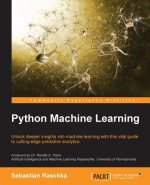
Python Machine Learning
49.91 € -

Tony Northrup's DSLR Book
20.82 € -19 % -

Persuasive Technology
55.84 € -14 % -
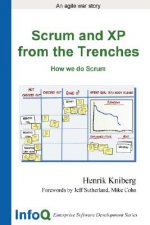
Scrum and XP from the Trenches
24.95 € -

Alice and Bob Learn Application Security
37.23 € -26 % -
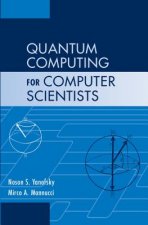
Quantum Computing for Computer Scientists
86.64 € -

Apache Kafka 1.0 Cookbook
40.85 € -
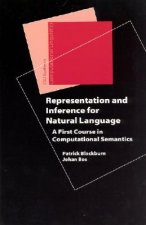
Representation and Inference for Natural Language
34.51 € -

Machine Learning with PyTorch and Scikit-Learn
53.73 € -2 % -

Storytelling with Data - Let`s Practice!
35.82 € -15 % -

Lego Animation Book
17.40 € -16 % -

Professional C# and .NET - 2021 Edition
50.51 € -15 % -

Learning React
48.90 € -25 % -

Designing Interfaces
52.22 € -20 % -
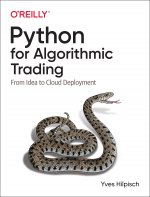
Python for Algorithmic Trading
64.30 € -19 % -

Computational Thinking
14.88 € -17 % -

Blue Fox: Arm Assembly Internals and Binary Analys is of Mobile and IoT Devices
32.90 € -27 % -
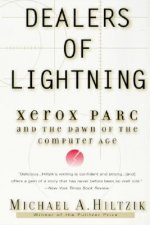
Dealers of Lightning
21.22 € -

Cambridge International AS and A Level Computer Science Coursebook
70.54 € -

Explore Software Defined Radio
16.19 € -28 % -

Delivering Business Analysis
60.07 € -

VMware vSphere Essentials
40.65 € -19 % -

Domain Driven Design Quickly
33.20 € -

Schaum's Outline of Mathematica, Third Edition
28.47 € -20 % -

Learning pandas -
56.75 € -

Mastering pandas
50.71 € -

Beginning C# and .NET - 2021 Edition
43.77 € -20 % -

Overdrive
14.48 € -19 % -

Annotated Turing - A Guided Tour Through Alan Turing's Historic Paper on Computability and the Turing Machine
23.24 € -24 % -

Designing for the Digital Age - How to Create Human-Centered Products and Services
64.40 € -7 % -

Spring Microservices in Action
55.74 € -
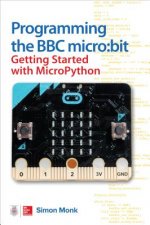
Programming the BBC micro:bit: Getting Started with MicroPython
17 € -15 % -

Book of Why
16.80 € -16 % -
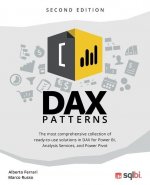
DAX Patterns
35.51 € -21 % -

White Paper
14.18 € -28 % -

Self-Taught Computer Scientist - The Beginner's Guide to Data Structures & Algorithms
24.04 € -26 % -

Fundamentals of Business Process Management
59.97 € -

CorelDRAW X8: The Official Guide
37.93 € -45 % -

Data Engineering with Apache Spark, Delta Lake, and Lakehouse
50.71 € -

Certified Enterprise Architect All-in-One Exam Guide
60.07 € -28 % -

Web Analytics 2.0 - The Art of Online Accountability and Science of Customer Centricity
33.60 € -20 % -

GDPR For Dummies
26.36 € -24 %
Collection points Bratislava a 2642 dalších
Copyright ©2008-24 najlacnejsie-knihy.sk All rights reservedPrivacyCookies


 15549 collection points
15549 collection points Delivery 2.99 €
Delivery 2.99 € 02/210 210 99 (8-15.30h)
02/210 210 99 (8-15.30h)